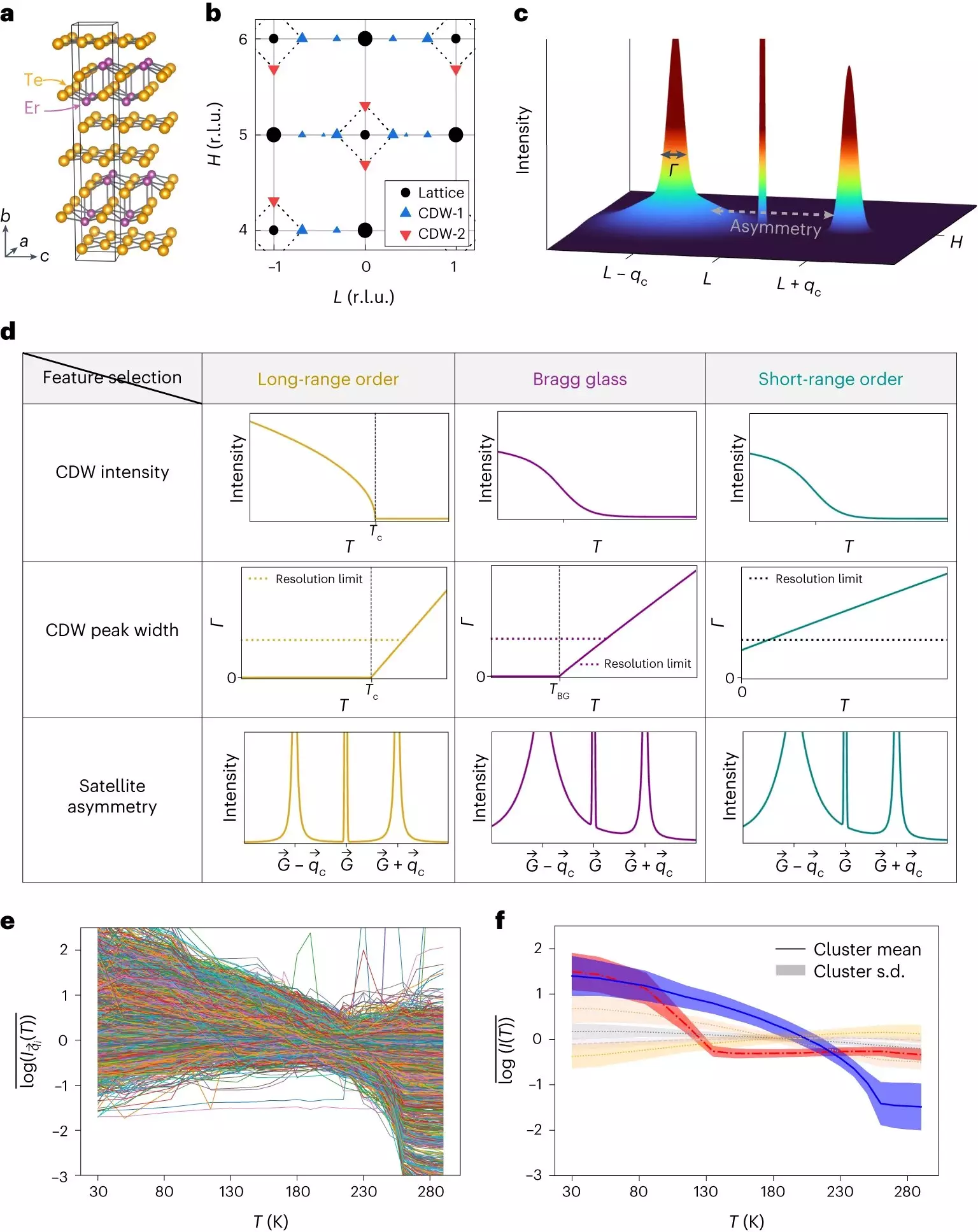In a ground-breaking achievement, Cornell quantum researchers have successfully detected a rare and elusive phase of matter known as the Bragg glass phase. This remarkable discovery addresses a long-standing question regarding the existence of this partially ordered state in real materials. The research paper, titled “Bragg glass signatures in PdxErTe3 with X-ray diffraction Temperature Clustering (X-TEC),” has been published in the prestigious journal Nature Physics. Lead author Krishnanand Madhukar Mallayya, a postdoctoral researcher in the Department of Physics at Cornell’s College of Arts and Sciences (A&S), collaborated with Professor Eun-Ah Kim and other scientists from Argonne National Laboratory and Stanford University in this groundbreaking study.
For decades, the Bragg glass phase has captivated physicists due to its unique properties. This phase lies somewhere between order and disorder, with a particular arrangement known as the charge density wave (CDW). The CDW correlation decays slowly but never completely disappears, as is the case in the disordered state. However, it is crucial to distinguish between the long-range order phase, the Bragg glass phase, and the disordered state. The challenging aspect lies in discerning these differences from experimental data that is marred by noise and the finite resolution of the experimental setup.
The Cornell research team achieved a major breakthrough by employing a strategic combination of materials, data analysis, and machine learning tools. Collaborating with scientists at Stanford, they identified a family of CDW materials suitable for experimentation: PdxErTe3. This systematic study allowed for greater control over the experimental conditions, crucial for accurate observations. The team acquired a substantial amount of X-ray data at Argonne National Laboratory, taking advantage of their cutting-edge facilities. To analyze this vast volume of data, they utilized X-ray Temperature Clustering (X-TEC), a novel machine learning data analysis tool. This scalable and automated approach enabled the researchers to overcome key challenges and detect the Bragg glass phase through X-ray scattering.
While the detection of the Bragg glass phase is an exciting scientific achievement, this research also represents a new mode of investigation in the era of big data. By employing machine learning tools and adopting data-scientific perspectives, researchers can tackle complex questions and identify subtle signatures through comprehensive data analysis. This breakthrough has far-reaching implications for the future of scientific research, particularly in fields that heavily rely on data analysis.
By successfully detecting the Bragg glass order and constructing a phase diagram, the Cornell research team has significantly advanced our understanding of the intricate interplay between disorder and fluctuations in materials. Moreover, their utilization of X-TEC to target and measure fluctuations through a high-throughput “peak spread” has the potential to revolutionize scattering experiments related to studying fluctuations.
The breakthrough discovery of the Bragg glass phase by Cornell quantum researchers has opened up new possibilities in the field of materials science. This research highlights the importance of synergistic collaborations, the integration of machine learning tools, and the analysis of large volumes of data. With each new discovery, we move closer to unraveling the mysteries of the universe and harnessing its potential for the benefit of humanity.


Leave a Reply